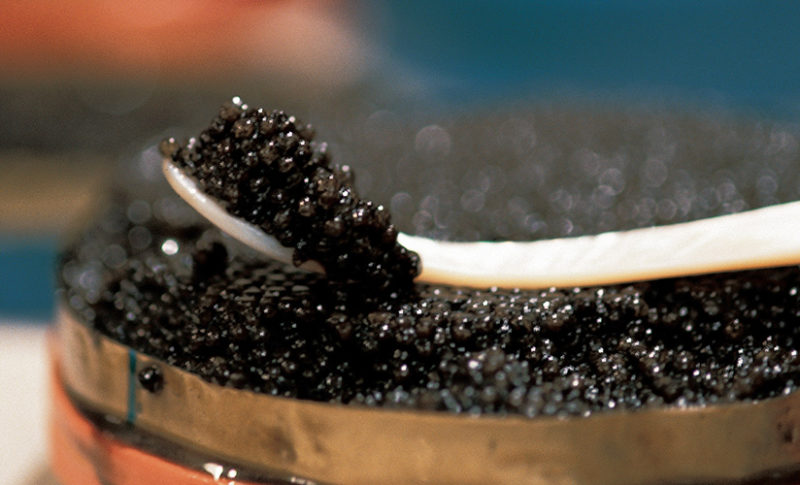The Thomas Keller Library—comprising The French Laundry, Bouchon, Under Pressure, Ad Hoc at Home, and Bouchon Bakery—is available in all ebook formats for the very first time. To celebrate the digital publication of these cookbooks, every week we will highlight a different recipe and excerpt from each of the five books. First up: The French Laundry Cookbook.
From innovative soup techniques, the proper way to cook green vegetables, the secrets of great fish cookery, and the creation of breathtaking desserts to beurre monté, foie gras au torchon, and a wild and thoroughly unexpected take on coffee and doughnuts, The French Laundry Cookbook captures, through recipes, essays, profiles, and extraordinary photography, one of America’s great restaurants, its great chef, and the food that makes both unique. And what’s more representative of the French Laundry—called “the most exciting place to eat in the United States” by the New York Times—than Keller’s incomparable “Oysters and Pearls”?
Oysters and Pearls
Makes 8 servings
INGREDIENTS
Tapioca
- ⅓ cup small pearl tapioca
- 1¾ cups milk
- 16 meaty oysters, such as Malpeque, scrubbed with a brush
- 1¼ cups heavy cream
- Freshly ground black pepper
- ¼ cup crème fraîche
- Kosher salt
Sabayon
- 4 large egg yolks
- ¼ cup reserved oyster juice (from above)
Sauce
- 3 tablespoons dry vermouth
- Remaining reserved oyster juice (from above)
- 1½ tablespoons minced shallots
- 1½ tablespoons white wine vinegar
- 8 tablespoons (4 ounces) unsalted butter, cut into 8 pieces
- 1 tablespoon minced chives
- 1 to 2 ounces osetra caviar
PREPARATION
For the tapioca:
- Soak the tapioca in 1 cup of the milk for 1 hour. (Setting it in a warm place will speed up the rehydration of the pearls.)
To shuck the oysters:
- Hold an oyster in a towel, to protect your hand, with the rounded side down. Lean the wider end of the oyster against the table for support. Push an oyster knife under the hinge at the narrow end of the shell. Don’t jam the knife in, or you risk damaging the oyster. You will hear a “pop”; twist the knife to loosen the shell. Keeping the knife directly under the top shell, run the blade along the right side to cut through the muscle. This will release the top shell, which can then be removed. Slide the knife under the meat to detach the second muscle holding the oyster in place. Reserve the oyster and all its juices in a small bowl. Repeat with the remaining oysters.
- Trim away the muscle and the outer ruffled edge of each oyster and place the trimmings in a saucepan. Reserve the whole trimmed oysters and strain the oyster juice into a separate bowl. You should have about ½ cup of juice.
To cook the tapioca:
- In a bowl, whip ½ cup of the cream just until it holds its shape; reserve in the refrigerator.
- Drain the softened tapioca in a strainer and discard the milk. Rinse the tapioca under cold running water, then place it in a small heavy pot.
- Pour the remaining ¾ cup milk and ¾ cup cream over the oyster trimmings. Bring to a simmer, then strain the infused liquid onto the tapioca. Discard the trimmings.
- Cook the tapioca over medium heat, stirring constantly with a wooden spoon, until it has thickened and the spoon leaves a trail when it is pulled through, 7 to 8 minutes. Continue to cook for another 5 to 7 minutes, until the tapioca has no resistance in the center and is translucent. The mixture will be sticky and if you lift some on the spoon and let it fall, some should still cling to the spoon. Remove the pot from the heat and set aside in a warm place.
For the sabayon:
- Place the egg yolks and the ¼ cup oyster juice in a metal bowl set over a pan of hot water. Whisk vigorously over medium heat for 2 to 3 minutes to incorporate as much air as possible. The finished sabayon will have thickened and lightened, the foam will have subsided, and the sabayon will hold a ribbon when it falls from the whisk. If the mixture begins to break, remove it from the heat and whisk quickly off the heat for a moment to recombine, then return to the heat.
- Stir the hot sabayon into the tapioca, along with a generous amount of black pepper. Mix in the crème fraîche and the whipped cream. The tapioca will be a creamy pale yellow with the tapioca pearls suspended in the mixture. Season lightly with salt, remembering that the oysters and the caviar garnish will both be salty. Immediately spoon ¼ cup tapioca into each of eight 4-by-5-inch gratin dishes (with a 3- to 4- ounce capacity). Tap the gratin dishes on the counter so that the tapioca forms an even layer. Cover and refrigerate until ready to use, or for up to a day.
To complete:
- Preheat the oven to 350º F.
For the sauce:
- Combine the vermouth, the remaining reserved oyster juice, the shallots, and vinegar in a small saucepan. Bring to a simmer and simmer until most of the liquid has evaporated but the shallots are glazed, not dry. Whisk in the butter piece by piece, adding a new piece only when the previous one is almost incorporated.
- Meanwhile, place the dishes of tapioca on a baking sheet and heat in the oven for 4 to 5 minutes, or until they just begin to puff up.
- Add the oysters and the chives to the sauce to warm through.
- Spoon 2 oysters and some of the sauce over each gratin and garnish the top with a quenelle, or small oval scoop, of caviar. Serve immediately.







No Comments